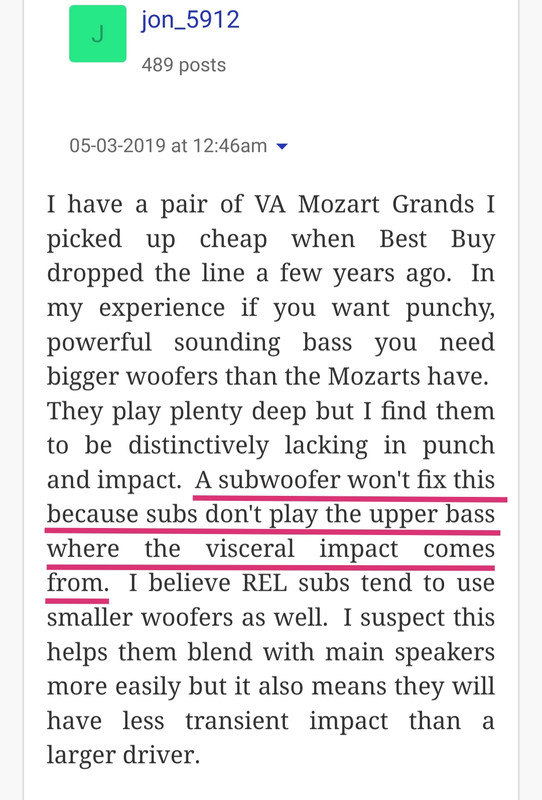Adding a distributed bass array consisting of three Rel subs and one SVS sub, corrected 90% of the issues I had with the low end in my system. The low end became "real", instead of uneven and limp. Previously I tried adding one sub, but it did very little to fix what was wrong. Do some research on distributed bass arrays (swarms) and consider this as an option.
Honest Experience on Effects of Subwoofer Please
I have read countless of threads on people’s experiences with subwoofers but am still confused. Although I don’t have any experience with high quality music subwoofers, I have been using a decent sub in my audio system for the past 18 years or so. The sub went in and out of the systems and various rooms throughout the years as I was not convinced if the sub was contributing anything to the system. At times I felt I could hear an improvement and at other times I thought the sub wasn’t doing anything. If I bump up the volume and crossover frequency on the sub to hear a larger impact, it’s overly done.
I am aware that a proper set up and/or quality of subwoofer is crucial to ensure a successful implementation of the sub(s) in a system. Let’s just assume that everything is done properly.
To cut to the chase, do people hear a small or appreciable difference with subwoofers, or it’s a big night and day difference? I know everyone’s expectations are different but I’m reading different opinions and experiences on this forum. For the first time in 15 years, I am considering a sub upgrade and have been in communication with the sub maker and dealer. I just wanted to get a clearer picture on the situation.
So, coming back to the question, just two questions;
1. Do people hear a small or appreciable difference with subwoofers, or it’s a big night and day difference?
2 Do subwoofers just fill up the missing deep bass below say 40Hz or 35Hz where the main speakers won’t reproduce, or they will also augment the mid bass and upper bass by producing a punchier sound with better kick, heft and dynamics? The drums or kick drums are usually in the region of the midbass and upper bass, not low bass.
Posts like the one below taken from another thread make me confused.

- ...
- 51 posts total
- 51 posts total

